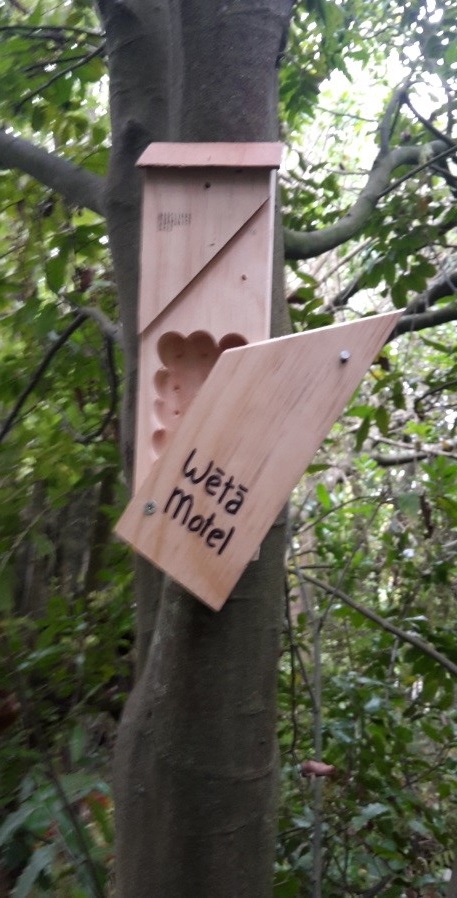Animals
Birds
Natives
Existing native species include: Bellbird (Korimako), Black-backed Gull (Karoro), Falcon (Karearea), Fantail (Piwakawaka), Grey Warbler (Riroriro), Harrier (Kahu), Kingfisher (Kotare), Shining Cuckoo (Pipiwharauroa), Silvereye (Tauhou), Welcome Swallow (Warou).
Potential native species include: Brown Creeper (Pipipi), Wood Pigeon (Kereru), Ruru (Morepork), Tomtit (Ngirungiru), Parson bird (Tui), White-faced Heron.
Introduced
Existing introduced species include: Blackbird, Californian Quail, Chaffinch, Dunnock, Goldfinch, Greenfinch, House Sparrow, Magpie, Pheasant, Redpoll, Pigeon, Skylark, Song Thrush, Starling, Yellowhammer.
Restoration
Each species has a different habitat. As planting progresses and matures, there will be less habitat suited to introduced species and more habitat suited to natives and some of the potential bird species may return.
In 2018 a group of Mt Pleasant students produced a website on caring for birds. Also, later that year we prepared a talk on birds and their habitats for a group visit of 100 Mt Pleasant students.
Monitoring
Bird surveys will be carried out 6 monthly, using the DOC “5 minute count” method at 5 stations along the Reserve valley floor. For results see:
Reptiles
Natives
There are existing skinks but no Canterbury Gecko have been seen.
Introduced
Occasional Tasmanian Tree Frogs visit from adjoining properties.
Restoration
As planting of shrubby species increases, skink numbers should likewise increase. We have placed out water drink stations for skinks for the duration of the unusually dry 2017/2018 Summer. In 2017 we planted an area of “Rocky” ecosystem near the bottom of the track to Avery Place. When this has become well established and when predators such as possums, mustelids, rats, mice and hedgehogs have been significantly reduced, we will investigate applying to DOC for the translocation of some Canterbury Gecko.
Invertebrates
Natives
Existing native species include: butterflies (red and yellow admiral, common copper, and southern blue), trapdoor and other spiders, ground weta, migratory locust, cockroaches, worms, bees, huhu and other beetles, slugs, mites, earwigs, various flies and moths, caterpillars and praying mantis. A more detailed list will be prepared.
Introduced
Butterflies (white and monarch), many spiders, ants, cockroaches, worms, honey and bumble bees, wasps, flies and beetles. A more detailed list will be prepared.
Restoration and Monitoring

We have erected a few tree weta “motels” on trees in the Reserve, but have not attracted any “occupants”. These hollow boxes provide a safe refuge for weta during the day. It is likely that there are no tree weta remaining in the Reserve and we will have to get approval to capture a colony from a nearby forest for relocation. Again we need to be sure that predator numbers are very low. We have also placed out several “insect logs” in different ecosystems in the Reserve and we will inspect these from time to time to identify insects living under them. Wasps can have a significant adverse effect on nectar supply and on insect numbers. We encourage neighbours to undertake wasp trapping.
Fish
No investigation to date.
Mammals
Natives
No bats have been seen, but it may be possible to establish them some time.
Introduced
Existing introduced species include: mice, rats, rabbits and hares, hedgehogs, mustelids (stoats, weasels, ferrets), possums, cats and dogs.
Restoration and Monitoring
Most introduced mammals predate native animals and some eat native plants. We undertake trapping in terms of our Animal Pest Control Strategy. We also encourage neighbours to undertake trapping (including wasp trapping). We report results of trapping in the Reserve and neighbouring properties in our Monthly Reports.
